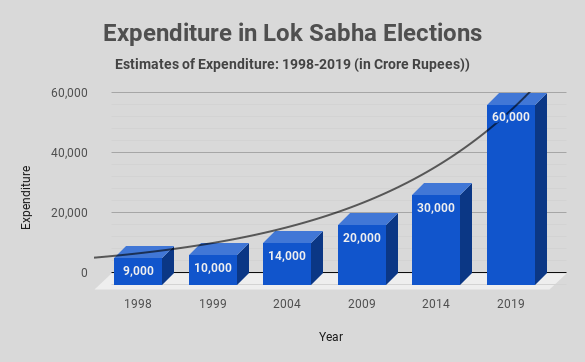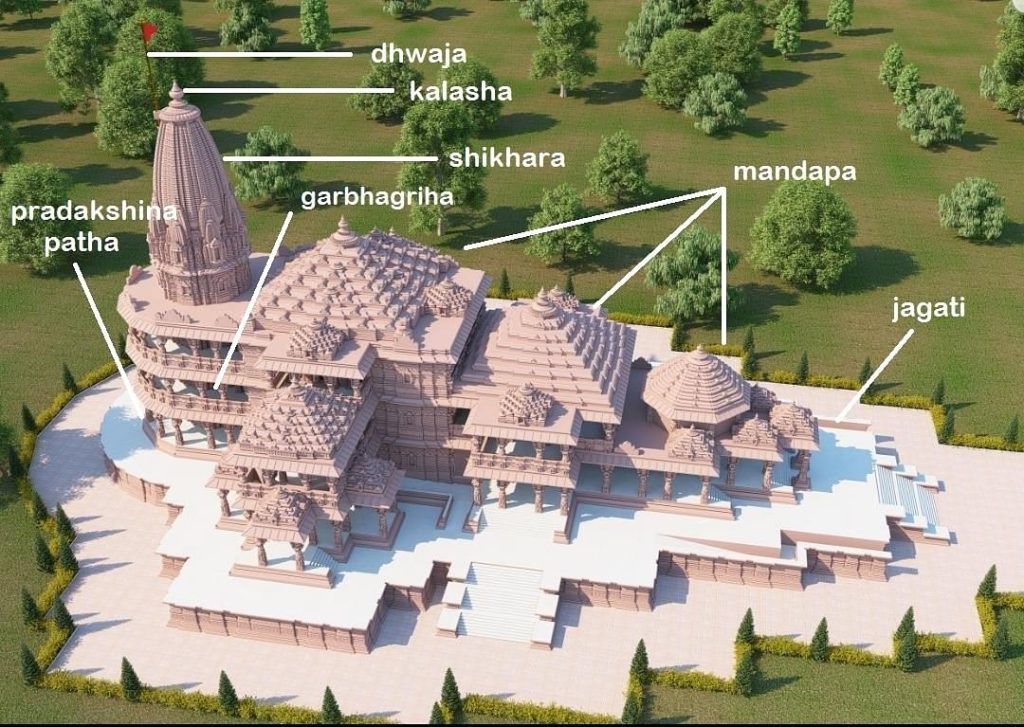CONTENTS
- One Nation, One Election
- Ram Temple Combines Ancient Art with Modern Engineering
One Nation, One Election
Context:
In September 2023, the Union Government established a ‘High Level Committee on One Nation, One Election,‘ with former President of India, Ramnath Kovind, as its chairman. Given that the outcomes of this initiative could potentially reshape the foundations of our democratic framework and reconfigure the federal structure, it is imperative to analyze the legal aspects promptly.
Relevance:
GS-2
- Federalism
- Representation of People’s Act
Mains Question:
Highlighting the evolution of the idea of One Nation, One Election, discuss its pros and cons. (10 Marks, 150 Words).
About One Nation, One Election:
- The fundamental concept behind One Nation, One Election is to coordinate the timing of Lok Sabha and State Assembly elections across all states, aiming to reduce the frequency of polls throughout the country.
- This practice was in effect until 1967 but was disrupted due to various factors such as defections, dismissals, and government dissolutions.
- The continuity of synchronized elections was first disrupted in 1959 when the Centre utilized Article 356 to dismiss the government in Kerala at that time.
- Following this, due to defections and counter-defections among parties, several Legislative Assemblies dissolved after 1960, leading to separate elections for Lok Sabha and State Assemblies.
- The proposal for conducting simultaneous elections was initially put forward in 1999 by the Law Commission, chaired by BP Jeevan Reddy.
About the Committee:
- The committee has convened three times, gathering the perspectives of various national and state political parties on the idea of synchronizing elections. Recently, public opinions and insights from distinguished jurists were also sought.
- Although there is no definite timeline for the committee to present its recommendations, the fact that this coincides with the approach to the general elections in 2024 raises significant concerns.
- There is a strong indication that the High Level Committee may propose a recommendation in favor of a unified election schedule for both the Lok Sabha and State Legislative Assemblies, potentially overlooking genuine constitutional and legal considerations.
- In the aftermath of this process, all eyes would likely turn to the Supreme Court of India. The Indian Supreme Court, having characterized its constitutional role as the “sentinel on the qui vive,” (watchful guardian) would be called upon to swiftly and purposefully determine the ultimate fate of Indian democracy.
Analysing the Concept of Synchronized Elections:
Arguments Favoring One Nation, One Election:
- Advocates of One Nation, One Election cite the substantial expenses incurred in conducting elections as a key rationale. The 2014 general elections, for instance, reportedly cost the public exchequer an estimated ₹3,870 crore.
- Proponents argue that having common elections for both the Union Parliament and State Assemblies would lead to a significant reduction in expenditures.

- Another argument in favor of synchronized elections is that the Model Code of Conduct comes into effect twice within a five-year cycle, disrupting the smooth functioning of government affairs and resulting in ‘governance downtime.’
Streamlined Governance:
- One of the key advantages of One Nation, One Election is that it allows the government to focus on governance after the elections conclude. Currently, elections occur regularly every three months in some part of the country, capturing the entire attention of the nation.
- This extensive engagement, from the Prime Minister to local panchayat members, creates a virtual paralysis of administration at various levels, negatively impacting India’s growth prospects.
Efficient Electoral Rolls:
- Conducting simultaneous elections allows for the use of the same electoral rolls across all elections, saving considerable time and money spent on updating them.
- Citizens would also benefit from the consistency, as they need not worry about their names being omitted from electoral rolls once they are enlisted.
Optimized Security Forces Deployment:
Currently, a substantial number of police personnel and paramilitary forces are deployed to ensure peaceful elections, incurring massive redeployment costs and diverting key law enforcement personnel from critical functions. Simultaneous elections could streamline the deployment of security forces.
Arguments Against One Nation, One Election:
- On the other hand, critics of unified elections assert that these reasons lack logical and factual validity. They contend that the cost of conducting free and fair elections to enable the people’s choice of government is a justifiable investment.
- Instances where a government may not complete a full five-year term, leading to subsequent elections, are seen as integral expressions of the democratic system and should be accepted.
- Similarly, the Model Code of Conduct and other guidelines issued by the Election Commission are viewed as necessary measures to minimize executive influence over voters and maintain a level playing field during the election period.
- In light of these considerations, it seems peculiar for the Union government and the Election Commission, which have refrained from holding Assembly elections in Jammu and Kashmir for nearly five years, to express strong concerns about governance downtime.
Legal Concerns
- In the case of S.R. Bommai v. Union of India (1994), the Supreme Court emphasized that States possess an independent constitutional existence and play an equally crucial role in the political, social, educational, and cultural life of the people as the Union.
- The Constitution specifies a distinct tenure for State Legislatures, set at five years from the date appointed for the first meeting, mirroring a similar provision for the tenure of the Union Parliament.
- Consequently, the implementation of a unified election process would necessitate altering the existing duration of several State Legislatures, contradicting the explicit language in the Constitution and violating the stance expressed by the Supreme Court in the S.R. Bommai case.
- Therefore, any action that compromises the independent constitutional existence of a State by modifying the duration of its Legislative Assembly would inherently be anti-federal and unconstitutional.
- Another aspect to scrutinize is the test of bias, exclusion, and inequality applied in this initiative. A quick examination of the website established by the High Level Committee, intended as a repository of relevant information and a platform for stakeholder interaction, reveals that it is only available in English and Hindi. This implies that such a significant consultation process is being conducted exclusively in one of the 22 official languages of the Union.
- Lastly, there is a fundamental question concerning the independence of the Election Commission, a constitutional body empowered with autonomy to make independent decisions regarding elections.
- Similar to the situation during demonetization when the Reserve Bank of India was kept uninformed, the Election Commission appears to be a passive observer in the entire process initiated by the High Level Committee established by the Union government.
Conclusion:
The stage is now set for an impending constitutional showdown — one that will pose the question of whether constitutional courts, particularly the Supreme Court, will engage in the political arena. Currently, it appears inevitable to navigate through this complex terrain if the constitutional integrity of the country is to be upheld.
Ram Temple Combines Ancient Art with Modern Engineering
Context:
The recently erected Ram Temple stands as a remarkable testament to architectural ingenuity and engineering innovation, seamlessly blending ancient design principles with contemporary techniques to create a structure of unparalleled significance. The visionary behind this magnificent creation is Chandrakant Sompura, an architectural designer from a family boasting a heritage of temple design spanning 15 generations. His vision for the temple extends its distinction not only within India but also on a global scale.
Relevance:
GS1- Art and Culture- Indian Culture – Salient aspects of Art Forms, Literature and Architecture from ancient to modern times.
Mains Question:
This Ayodhya Ram Mandir’s architecture not only mirrors a cultural legacy but also integrates inventive methods to ensure its longevity for more than a thousand years. Examine. (10 Marks, 150 Words).
The Temple’s Architecture:
- The Ayodhya Ram Mandir features a layout with three floors, each standing at a height of 20 feet and encompassing a total of 392 pillars and 44 doors.
- The construction incorporates materials such as Makrana Marble, Pink Sandstone, granite stone, and colored Marble.
- The temple’s foundation is composed of a 14-meter-thick layer of roller-compacted concrete, and a protective 21-foot-high granite plinth has been strategically placed to guard against ground moisture.
- Designed in the Nagara style, a North Indian temple architecture, the Ram Temple occupies a sprawling area of 2.7 acres, featuring a built-up area of around 57,000 square feet across three stories.
| The Nagara style of temple architecture, initially developed in North India during the 5th century AD, gained popularity in Northern, Western, and Eastern India, excluding the Bengal region. This architectural style is notably present in areas around Malwa, Rajputana, and Kalinga. Characterized by a simple stone platform with ascending steps leading to the temple, Nagara style incorporates distinctive features such as: Sikharas: The garbhagriha (sanctum sanctorum) is consistently positioned directly beneath the highest Sikharas, which also feature a Kalash (Amalaka) installed on the Shikhara. Absence of boundary walls or gateways. Distinct regional schools within the Nagara style include the Orissa school, Chandel school, and Solanki school. |

- Following the Nagara style of architecture, the temple includes a Sanctum Sanctorum (garbhagriha), Mandaps (halls), and Mandirs.
- Within the temple compound, dedicated corners are allocated to Surya, Bhagwati, Ganesh, and Shiv.
- Additionally, temples for Annapurna and Hanuman are constructed on the northern and southern arms, respectively.
- Temples for Maharshi Valmiki, Vashishtha, Vishwamitra, Agastya, Nishad Raj, Shabri, and others also contribute to the spiritual and architectural richness of the temple complex.
- Notably, the construction refrains from using iron or steel, as Sompura believes in their limited lifespan of 80-90 years. Towering to a height of 161 feet, the temple is roughly 70% of the iconic Qutub Minar.
- The construction approach adopts a unique methodology, employing top-quality granite, sandstone, and marble. Dr. Pradeep Kumar Ramancharla, Director of the Central Building Research Institute (CBRI), played a pivotal role, emphasizing the absence of cement or lime mortar in the joints.
- Instead, a lock and key mechanism, utilizing trees and ridges, permeates the entire structure. CBRI ensured the earthquake-resistant structural design, capable of withstanding earthquakes with a return period of 2,500 years.
- Chairman of the temple construction committee asserts that the temple is built to endure for over a thousand years, supported by collaboration with esteemed Indian scientists, including those from ISRO. The involvement of ISRO scientists underscores the prestige and significance of the project.
Conclusion:
Construction encountered a unique challenge in the sandy and unstable ground beneath the temple, near the Saryu River. However, scientists devised a clever solution. The entire temple area underwent excavation to a depth of 15 meters, where engineered soil was laid to a depth of 12-14 meters. No steel rebars were used, and 47-layered footings were compacted to mimic solid rock. This three-story masterpiece not only mirrors a cultural legacy but also integrates inventive methods to ensure its longevity for more than a thousand years.




